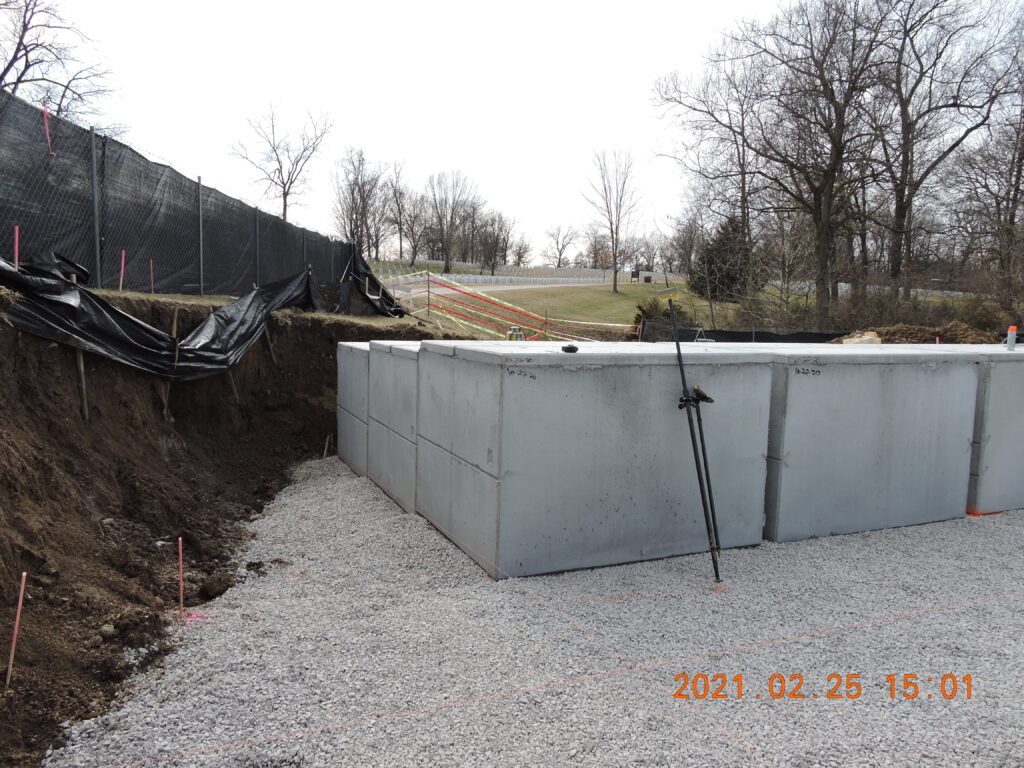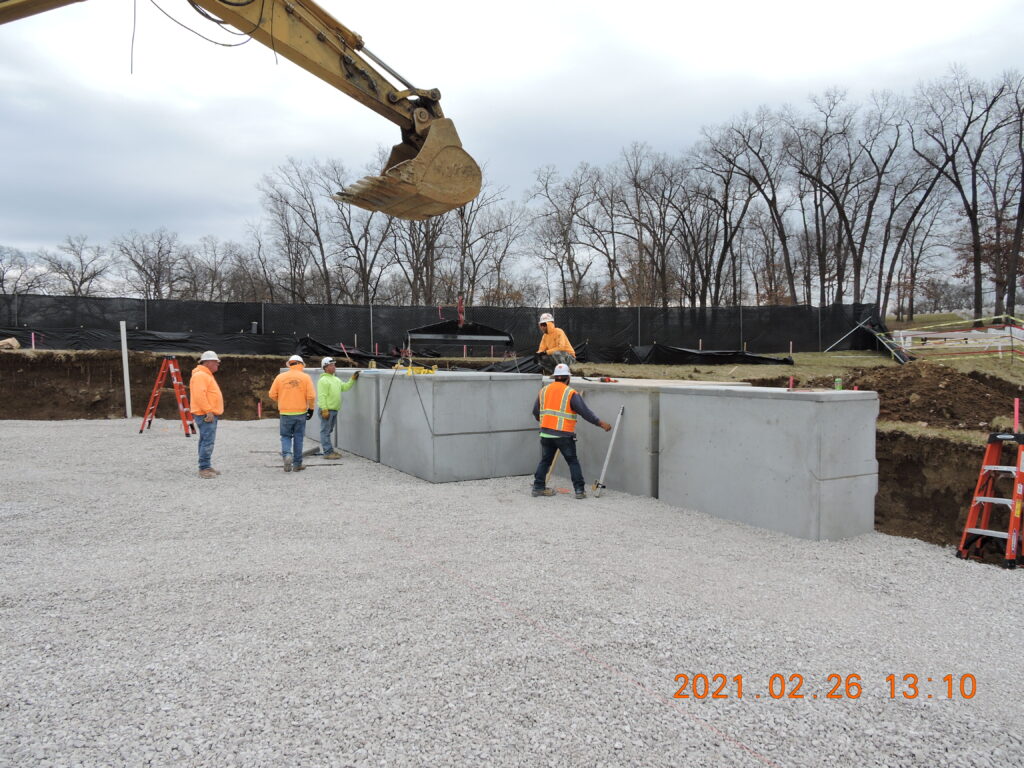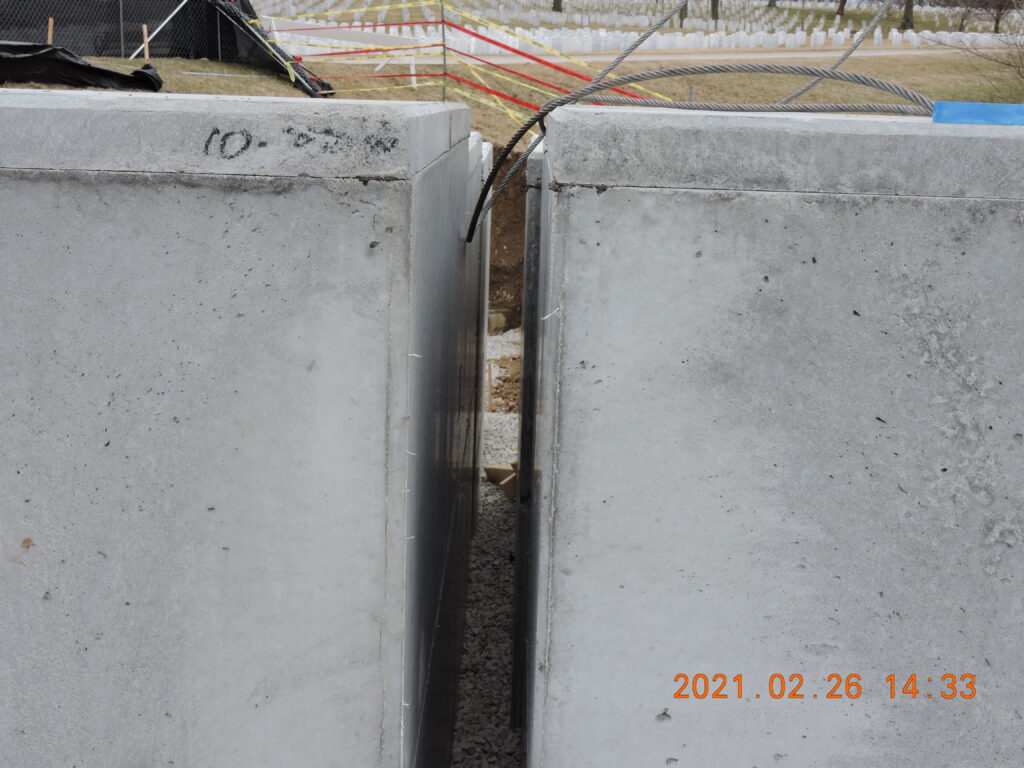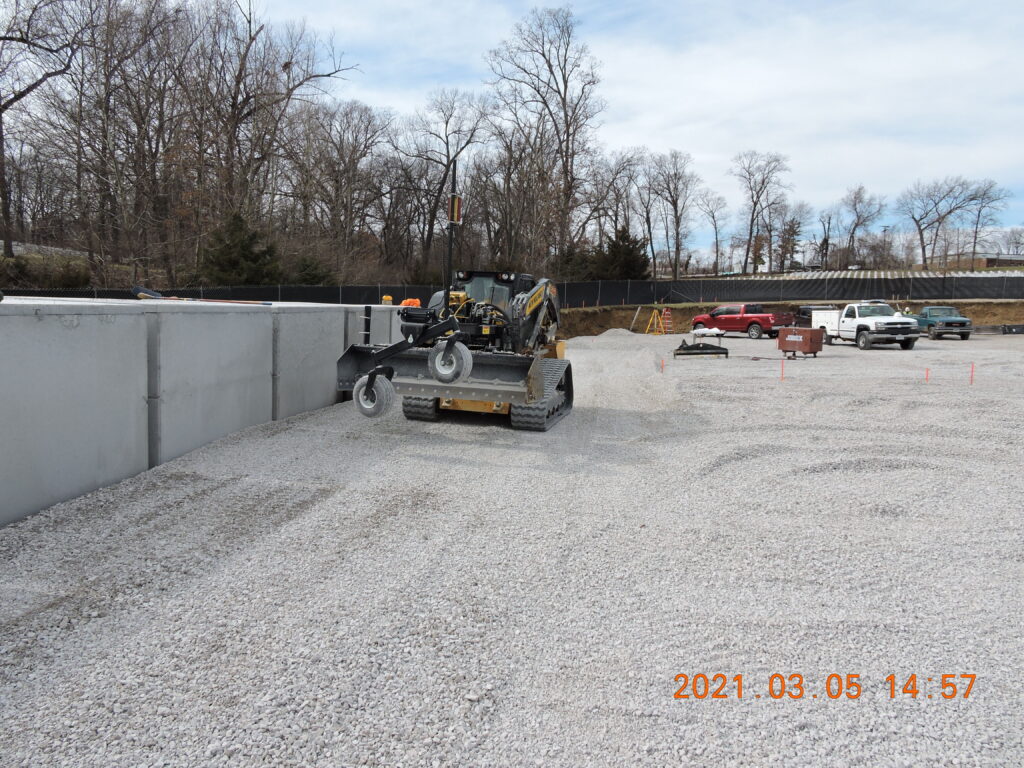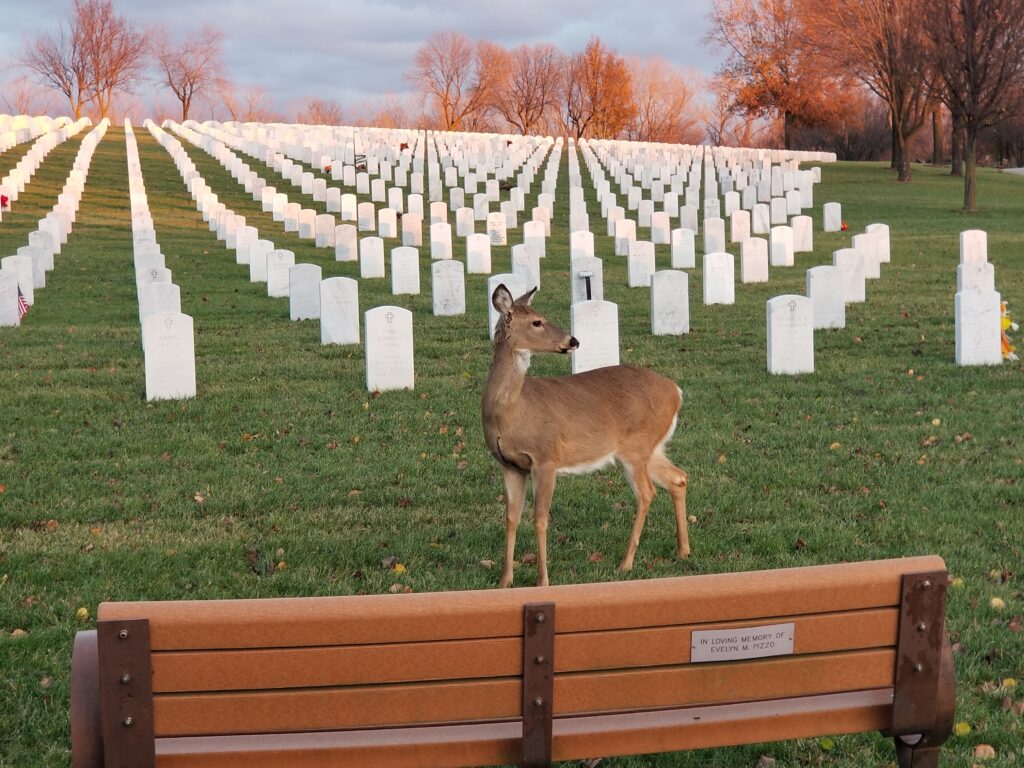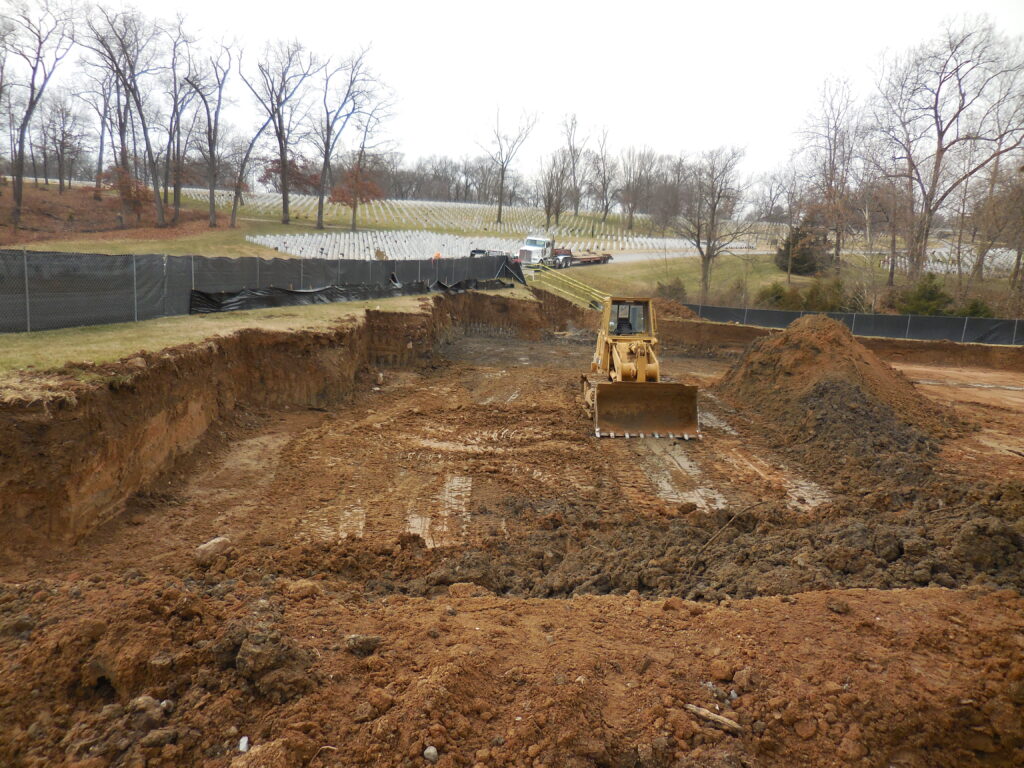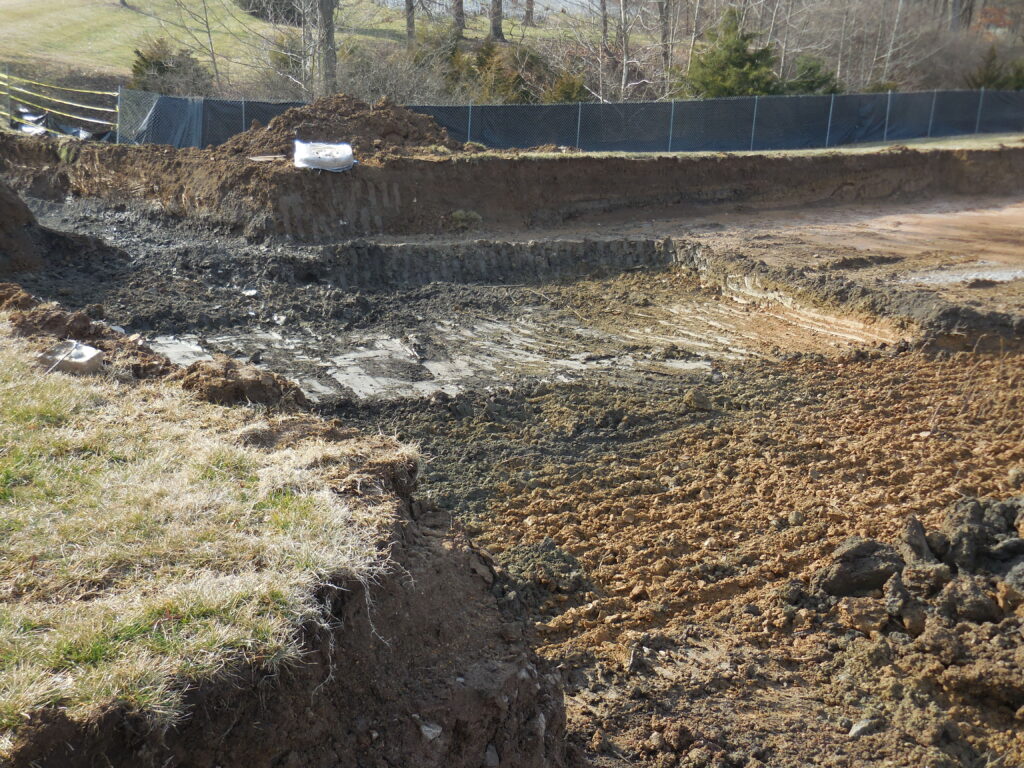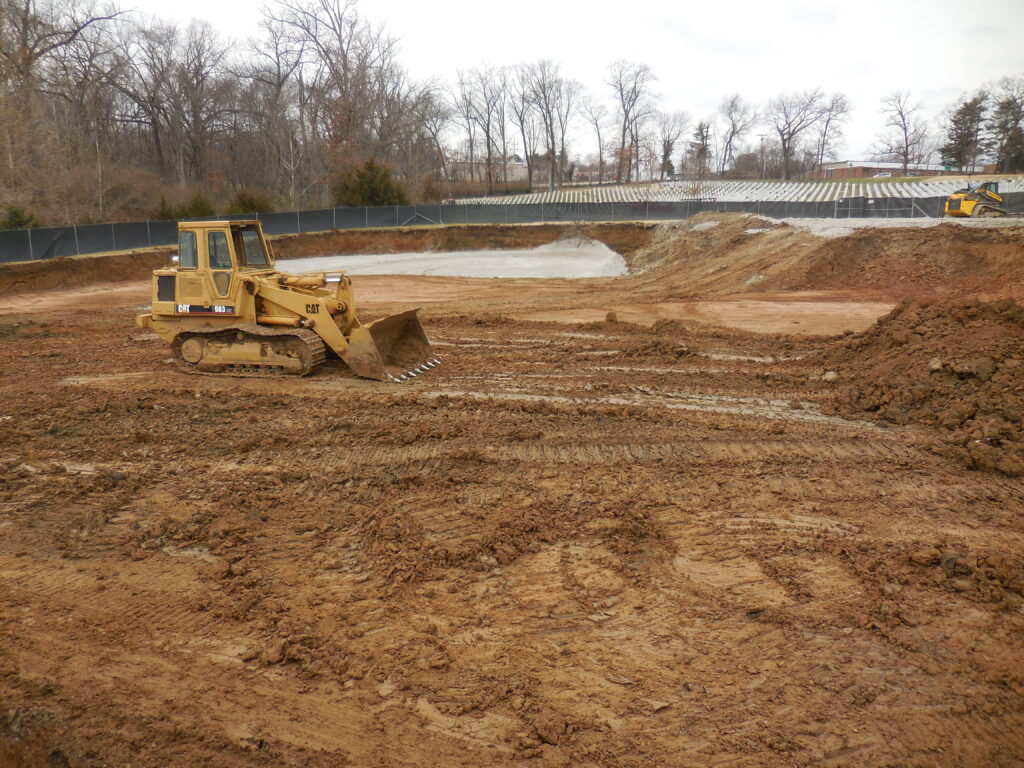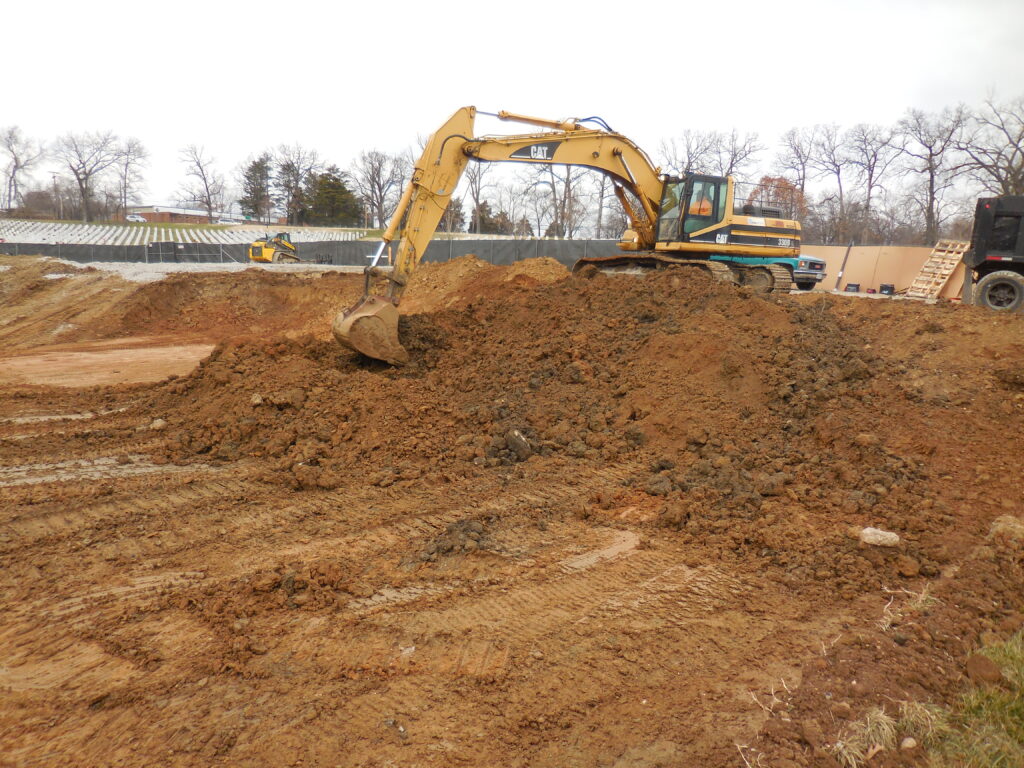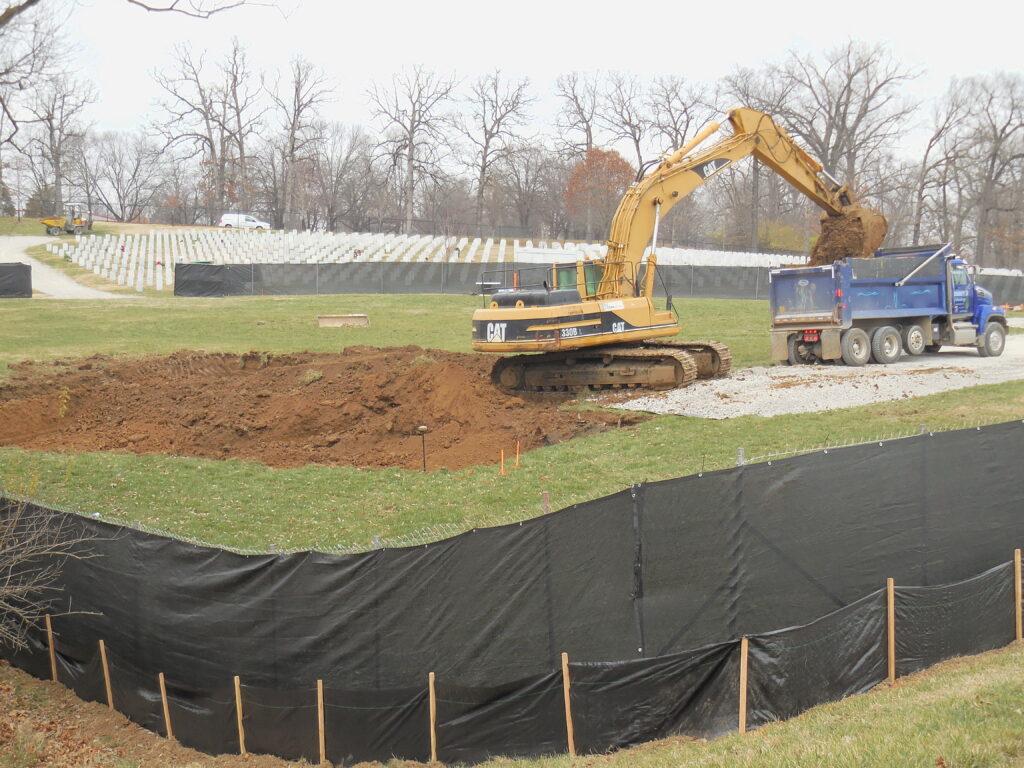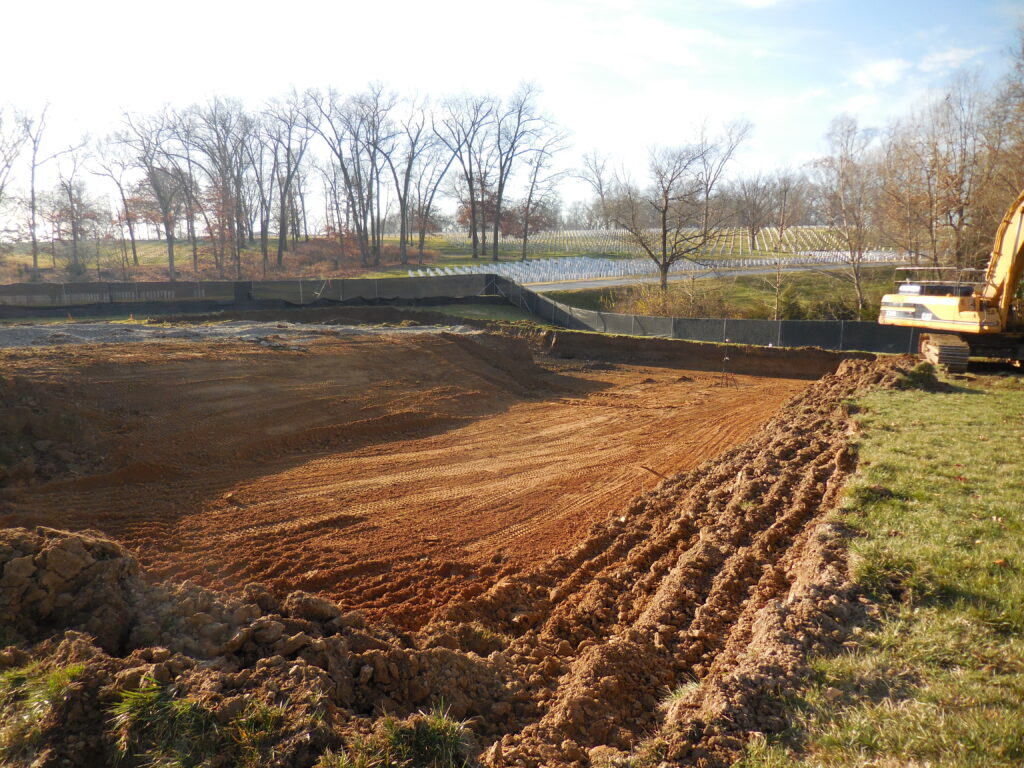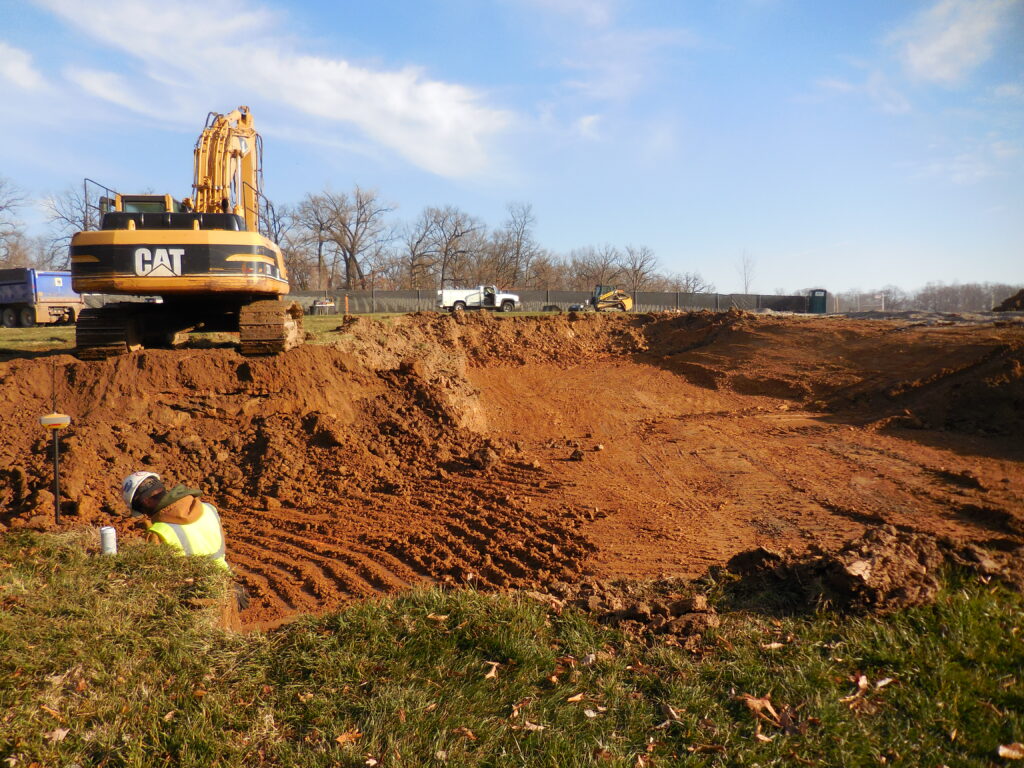Jefferson Barracks National Cemetery, established in 1866, is one of the oldest and largest national cemeteries in the United States. Located in St. Louis, Missouri, the cemetery spans over 331 acres and serves as the final resting place for approximately 237,000 veterans and their family members as of 2021. The site holds significant historical value, being a pivotal burial ground since the Civil War, and continues to honor the service and sacrifice of American military personnel.
The recent Jefferson Barracks National Cemetery project, Section 1KK Crypt Conversion, involved the installation of 1,264 pre-placed crypt vaults to accommodate future interments more efficiently. The project site was part of the existing cemetery grounds but was undeveloped prior to the project. B2 Constructors exported over 10,000 cubic yards of soil and installed a drain tile system to manage water drainage to a nearby creek. Advanced GPS and GNSS accuracy technology, including laser-guided dozers, excavators, and graders, were utilized to maintain tight tolerances throughout construction. The crypts were installed stepped-graded, requiring precision grading to maintain the elevation differences between each row.
The project scope included comprehensive site preparation, earthwork, and the installation of pre-cast concrete vaults approximately 8 feet below the final grade. Significant grading work was necessary to achieve the desired topography due to the site’s downward slope to the south. Following the installation of the crypts, backfilling with river rock, sand, and topsoil was completed with GNSS accuracy, followed by fine grading, sodding, and final watering to prepare the crypt field for handover.
Overall, this project represented a significant modernization and expansion of Jefferson Barracks National Cemetery, aligning with contemporary burial practices while preserving the site’s historical integrity. The extensive scope of work highlighted the project’s complexity and importance in continuing to honor the nation’s veterans and their families.
